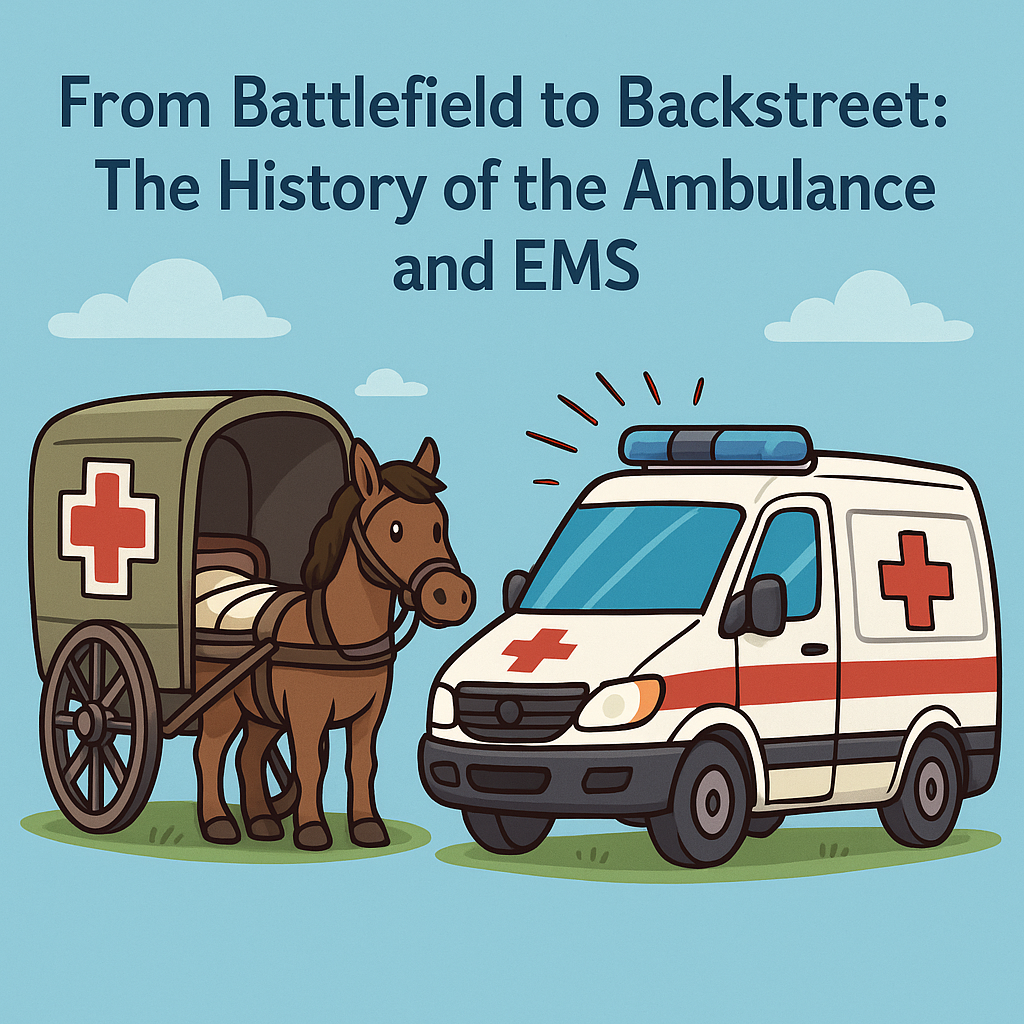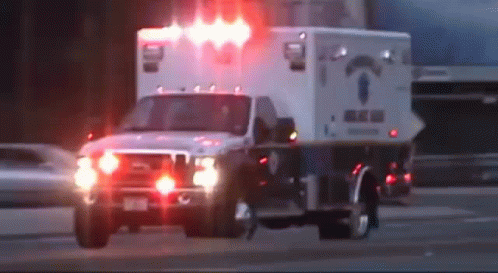🚑 From Battlefield to Backstreet: The History of the Ambulance and EMS

Medical History | The Varrock Street Journal
Happy Friday to all of our wonderful readers!
You hear a siren, see flashing lights, and watch as an ambulance speeds through traffic. It’s a moment we’ve all witnessed—but have you ever wondered how this system came to be? When did emergency medical teams first start racing to save lives?
Today, we're taking a journey through time to explore the history of the ambulance and the rise of EMS, from military innovations to modern mobile ICUs.

⚔️ Battlefield Beginnings: The First Ambulances
The concept of emergency transport began on the battlefield, where rapid evacuation was crucial. The first true “ambulances” were developed during:
- The Napoleonic Wars (1790s–early 1800s): French surgeon Dominique Jean Larrey created the ambulance volante (“flying ambulance”)—a horse-drawn carriage used to swiftly move wounded soldiers off the battlefield.
- American Civil War (1860s): The U.S. military adopted similar systems. Union Army surgeon Jonathan Letterman revolutionized battlefield care by introducing organized field hospitals and ambulances.
At this stage, ambulances were about transport only—not treatment.
🏥 Civilian Expansion: Ambulances in the Streets
After wartime innovations proved effective, cities began introducing ambulance systems for the public:
- 1865 – Cincinnati, Ohio: America’s first civilian ambulance service was launched from a hospital and staffed by interns with a stretcher, a bell, and some whiskey.
- 1867 – London: The St. John Ambulance Brigade was founded, training civilians in first aid and providing organized care during public events and emergencies.
- Late 1800s–Early 1900s: Ambulances evolved from horse-drawn wagons to motorized vehicles, improving speed and reliability.
💉 EMS Is Born: Beyond Transportation
In the 20th century, focus shifted from transporting patients to treating them on the way. This era marked the birth of modern EMS:
- 1960s: Studies revealed that more people were dying from trauma and heart attacks at home or en route to hospitals than on the battlefield.
- 1966 – "Accidental Death and Disability" Report (U.S.): This landmark document criticized the lack of organized emergency response and called for trained EMTs, national standards, and faster response times.
- 1970s: The development of paramedic programs expanded EMS capabilities to include:
- CPR and defibrillation
- IV fluids
- Emergency medications
- Intubation
TV shows like Emergency! (1972) helped popularize and legitimize EMS as a skilled profession.
🧠 Why This Matters
The ambulance is more than a vehicle—it’s often the first point of contact between a critically ill person and life-saving care. In less than 300 years, we’ve gone from dragging soldiers in carts to performing advanced procedures in moving ambulances.
Today’s EMS providers are highly trained, skilled in trauma care, cardiac emergencies, airway management, and more. Their presence saves thousands of lives each year.
🌍 Spotlight on the Future
- Telemedicine in ambulances: Connecting paramedics with ER physicians in real-time
- Community paramedicine: Treating chronic conditions at home to prevent ER visits
- Drone-assisted EMS: Delivering defibrillators and first aid faster than ambulances in some rural areas
- AI and predictive dispatching: Optimizing response times using data-driven systems
😲 Did You Know?
- The word “ambulance” comes from the Latin ambulare, meaning “to walk or move”—referring to mobile field hospitals.
- Early ambulance crews included no medical personnel—just drivers.
- In many countries today, air ambulances are used to reach remote areas in under 30 minutes.
Here is a brief video discussing the history of EMS!
🧠 Reflection Questions
- How has your perception of ambulances changed knowing their wartime roots?
- What areas of emergency care could still be improved with innovation?
- What responsibilities should EMS systems have beyond emergencies?
👋 Final Thoughts
The ambulance started as a simple wagon pulled through fields of war. Today, it's a rolling emergency room, staffed by professionals who bring the hospital to your driveway in minutes. Its evolution is a testament to how necessity, compassion, and science shape the systems we trust with our lives.
📚 References
- U.S. Department of Transportation. (1966). Accidental Death and Disability: The Neglected Disease of Modern Society.
- National EMS Museum. (2024). History of the Ambulance. https://www.emsmuseum.org
- Britannica. (2024). Ambulance Services. https://www.britannica.com/technology/ambulance
- Smithsonian Magazine. (2019). The Origins of Emergency Medical Services in the U.S. https://www.smithsonianmag.com
📲 Ride along with us next week:
- Instagram: @thevarrockstreetjournal
- TikTok: @varrock.street.jo
